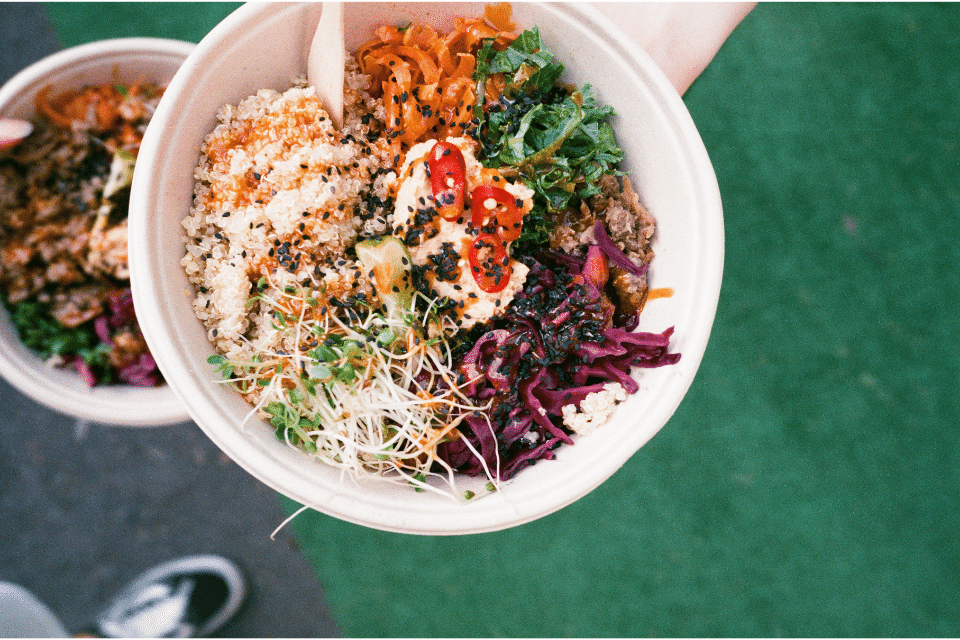Contemplating a low FODMAP diet to manage symptoms of irritable bowel syndrome (IBS)? If so, keep reading, because this article will help you prepare for what’s coming.
Before the Low FODMAP Diet
As Benjamin Franklin once said, “By failing to prepare, you are preparing to fail.”
Before and After Low FODMAP Diet requires planning and preparation. Foremost, I encourage you to seek the help of a knowledgeable registered dietitian (RD). Not sure where to find one? Check out Patsy Catsos’ FODMAP dietitian directory, Kate Scarlata’s list of FODMAP dietitians, or Monash University’s FODMAP Dietitians Directory.
Now, here are my top eight tips for preparing for a low FODMAP diet.
- Compile a list of reliable go-to low FODMAP resources for recipes and product ideas. Here are some of my favorites:
-
- Monash University Low FODMAP website and app
- Rachel Paul’s Low FODMAP website
- Kate Scarlata’s Blog (expert RD advice, plus recipes)
- FODMAP Everyday (excellent for recipes and product ideas)
- Fun Without FODMAPs (easy low FODMAP recipes)
- Choose one list of low and high FODMAP foods and stick with it. One of the most frustrating things for someone trying to adhere to a low FODMAP diet is there is no universal list of FODMAP-containing foods. So lists frequently contradict one another. Save yourself the headache and choose just one to follow. Better yet, get a list from your GI Registered Dietitian.
- Focus on what to eat versus what to avoid. There are plenty of nutritious and delicious foods one can enjoy on a low FODMAP diet. Find your favorites from every food group and dig in!
- Don’t skimp on fiber. There are lots of high-fiber, low-FODMAP foods, including fruits, vegetables, nuts, seeds, legumes, and whole grains, allowed on a low FODMAP diet. Aim to include a wide variety of these in your diet. Too often, people rely on rice cakes, corn chips, and other low FODMAP, low-fiber products because they’re easy. However, these products are low in fiber and other key nutrients.
- Do skimp on artificial sweeteners and excess sugar. Artificial sweeteners and sucrose (table sugar) are low FODMAP. However, neither is good for gut health. Both can worsen IBS symptoms and disturb the balance of the gut flora.
- Grocery shop and/or food prep ahead of time. Some low FODMAP products are unavailable on grocery store shelves, notably broths and salad dressings. I recommend you order low FODMAP broths (or pre-make them) before you begin the diet. For salad dressing, a simple olive oil and lemon combination will do.
- Consider a low FODMAP meal delivery service. A meal delivery service, like Epicured, makes meal planning a cinch. This approach works very well for people who don’t have the time to plan, shop, prep, and cook meals.
- Make sure you’re a suitable candidate for a low FODMAP diet. Arguably, the most important tip. Just because you have IBS doesn’t mean you should follow a low FODMAP diet. The low FODMAP diet may not be appropriate for the following individuals:
- Someone with an active eating disorder. Like any avoidance diet, the low FODMAP diet can lead to disordered eating patterns and eating disorders.
- Someone who is malnourished.
- Someone who has other dietary restrictions in place.
- Someone who cannot follow the diet. Consider willingness, educational level, financial burden, and food access.
Finally, before embarking on any diet that strictly limits or eliminates gluten-containing foods (the low FODMAP diet is not 100% gluten-free, but it’s very low in gluten), make sure your doctor has ruled out celiac disease.
During the low FODMAP Diet
OK, you’ve begun the low FODMAP diet. Now, what?
First, expect to mess up. Mistakes happen. This diet is complex and nuanced. Even as a Registered Dietitian who deals specifically with GI issues, I’ve accidentally eaten high FODMAP foods on a low FODMAP diet. It happens, and it’s no big deal. A low FODMAP diet is for symptom management only. Once those pesky FODMAPs are out of your system, they can’t hurt you. Consider adding another day or two to your elimination phase.
Next, pay attention to your eating behavior. If you’re wolfing down your food like Cookie Monster in a cookie factory, you’re unlikely to feel better, no matter what you’re eating. Chew your food well, and eat slowly. If you’re a fast eater, try eating with your non-dominant hand and putting your food down between bites.
Finally, make sure you complete all three phases of the low FODMAP diet:
- The Elimination Phase (2-12 weeks)
- The Reintroduction Phase (varies)
- The Maintenance Phase
The low FODMAP approach doesn’t start and stop with the elimination phase. Reintroducing FODMAPs is important for nutritional variety, your gut microbiota, and your sanity. FODMAPs are prebiotic fibers, so they’re important fuel for beneficial gut microbes.
After the Low FODMAP Diet
Hopefully, you’re one of the roughly 70% of IBS patients who respond to a low FODMAP diet, and you can work closely with your FODMAP RD to personalize your maintenance diet.
However, some people won’t respond positively to a low FODMAP diet. Here are some common conditions I see in people who don’t respond to a low FODMAP diet:
- Histamine intolerance
- Sucrase isomaltase deficiency
- Bile acid diarrhea
- Small intestinal bacterial overgrowth (SIBO)
- Non-celiac wheat sensitivity.
If your symptoms have not responded to the low FODMAP diet, work closely with your multidisciplinary gastrointestinal (GI) team to investigate other reasons you didn’t feel better. Your team can help you figure out if there’s something else going on that’s triggering your IBS.


